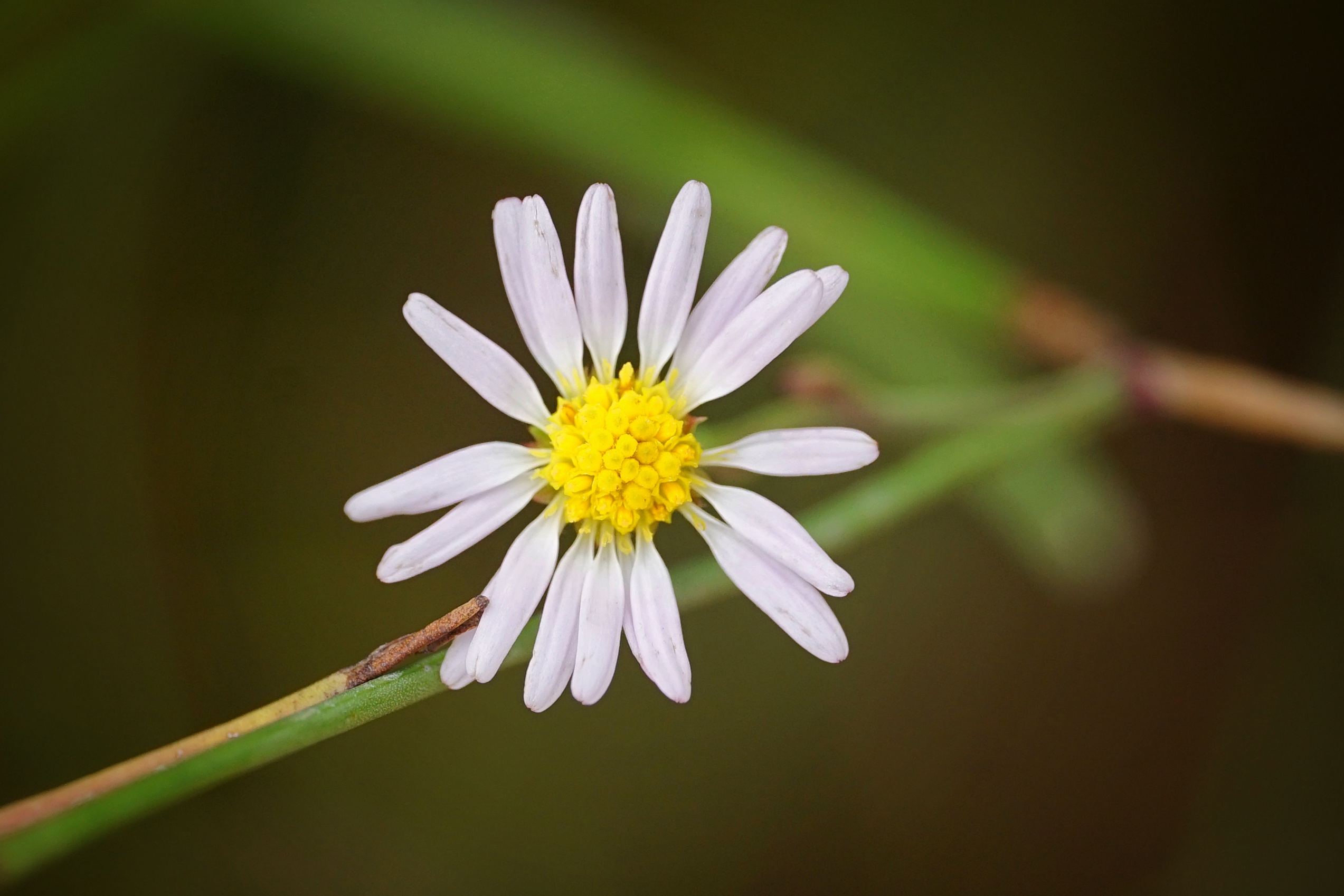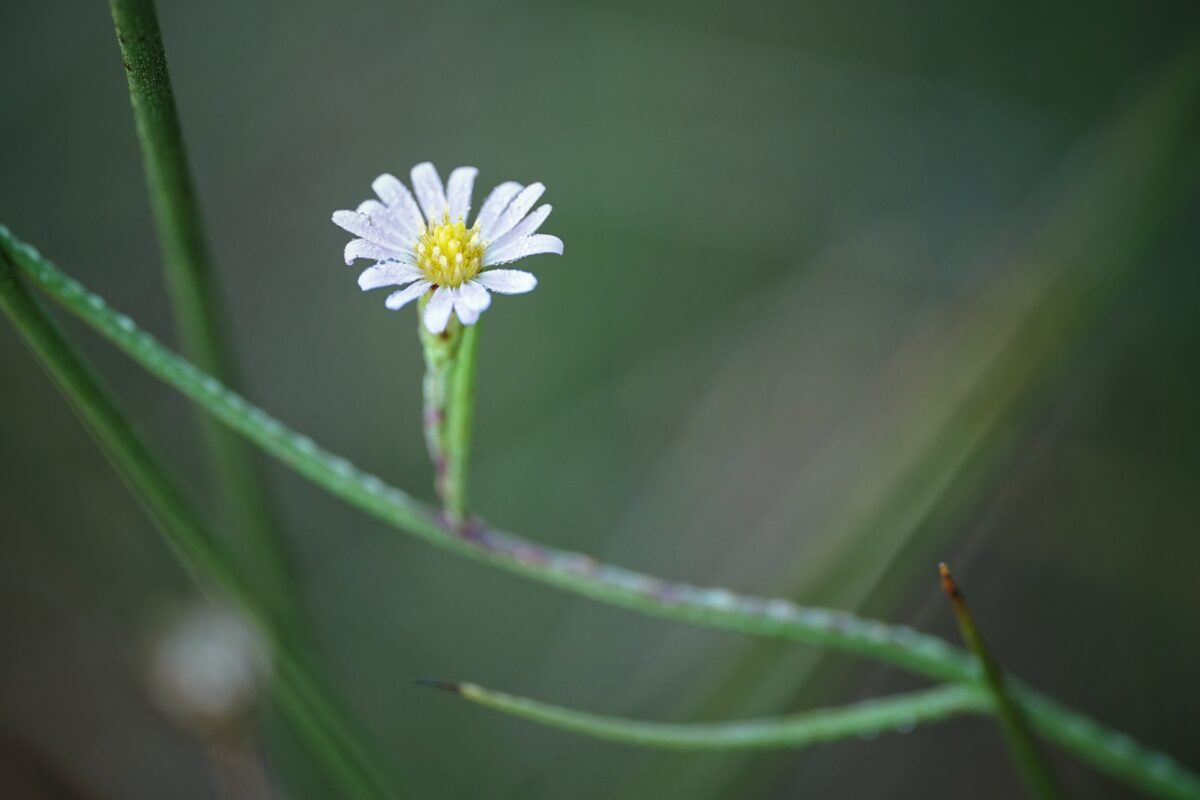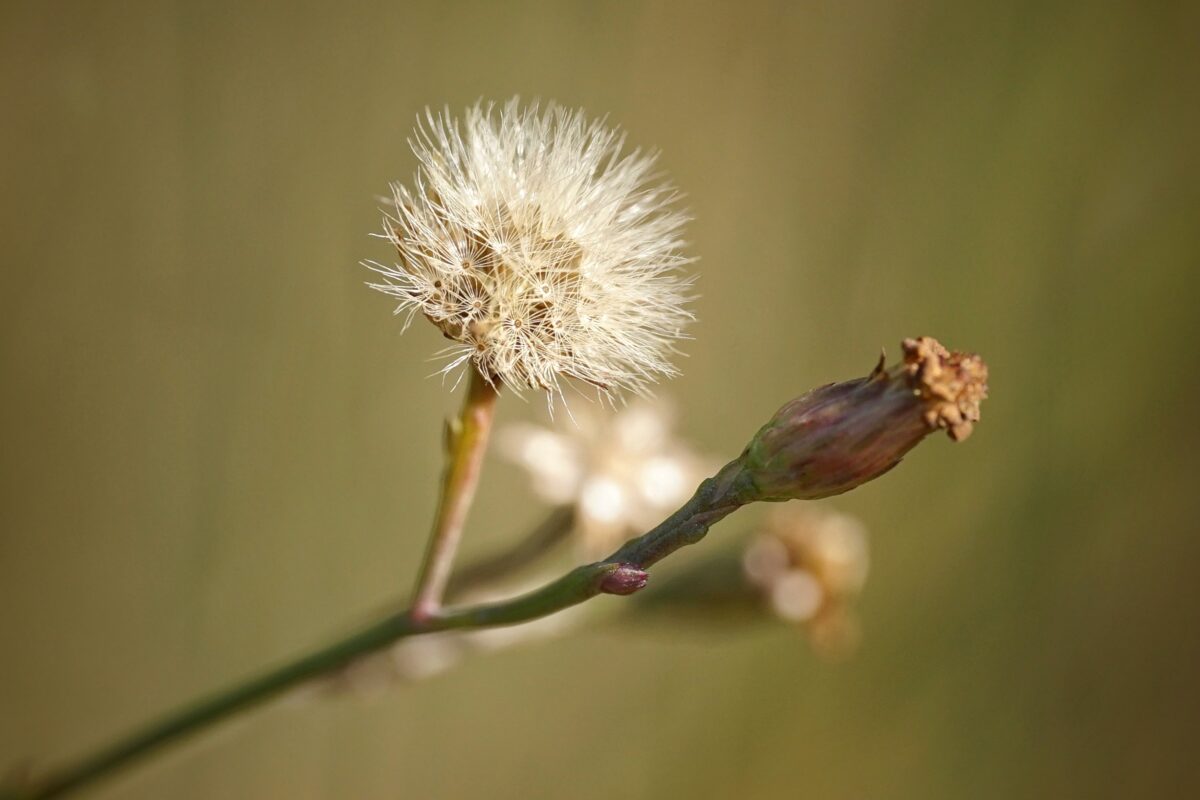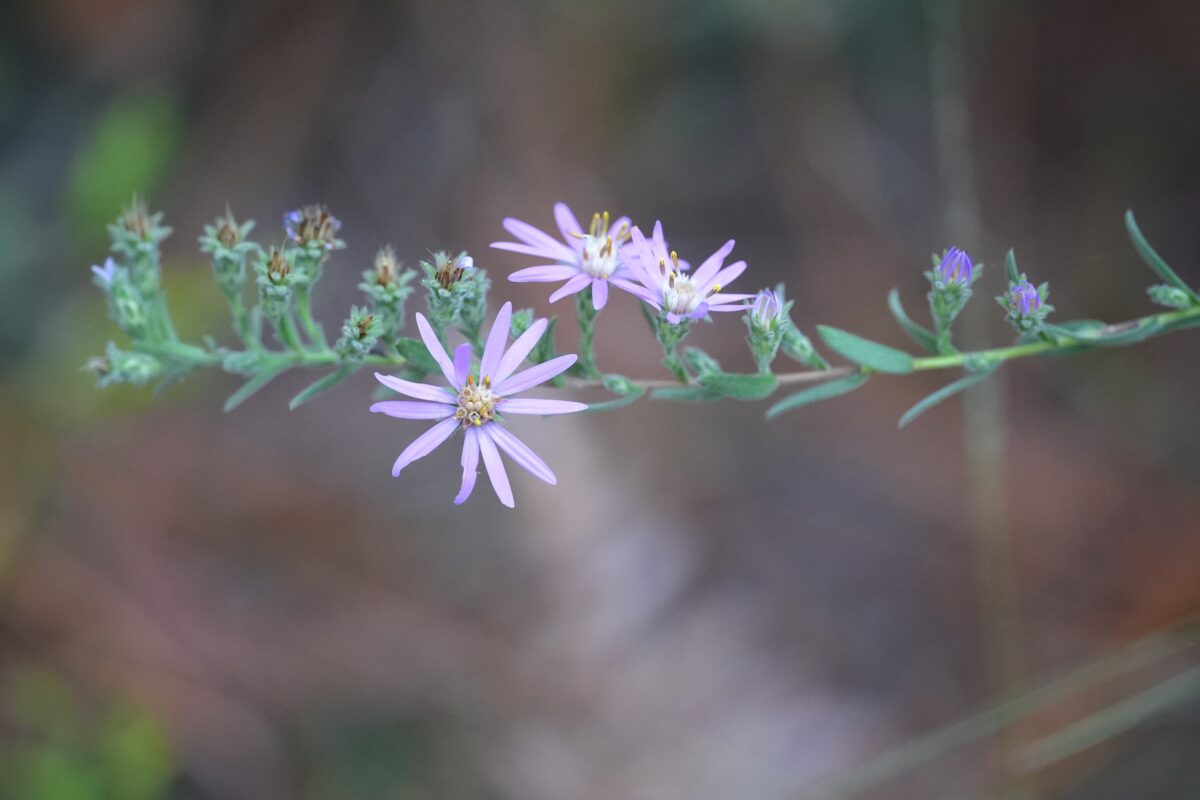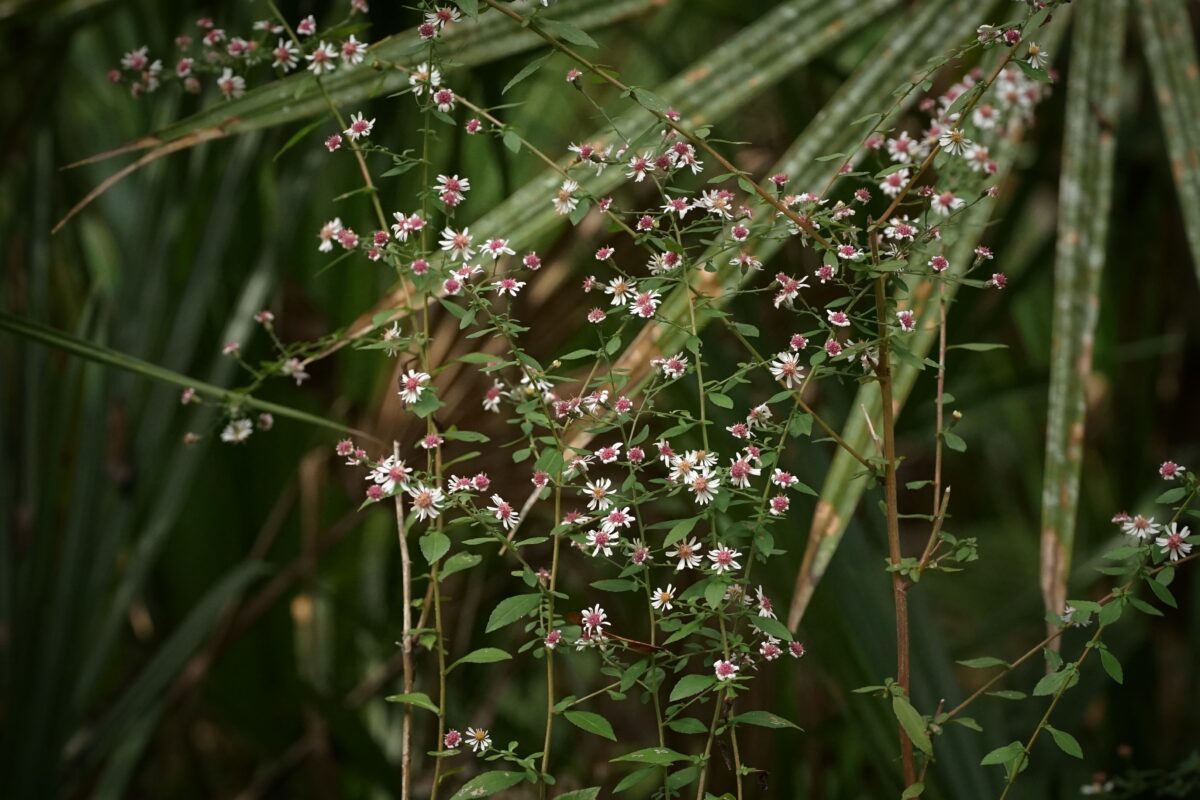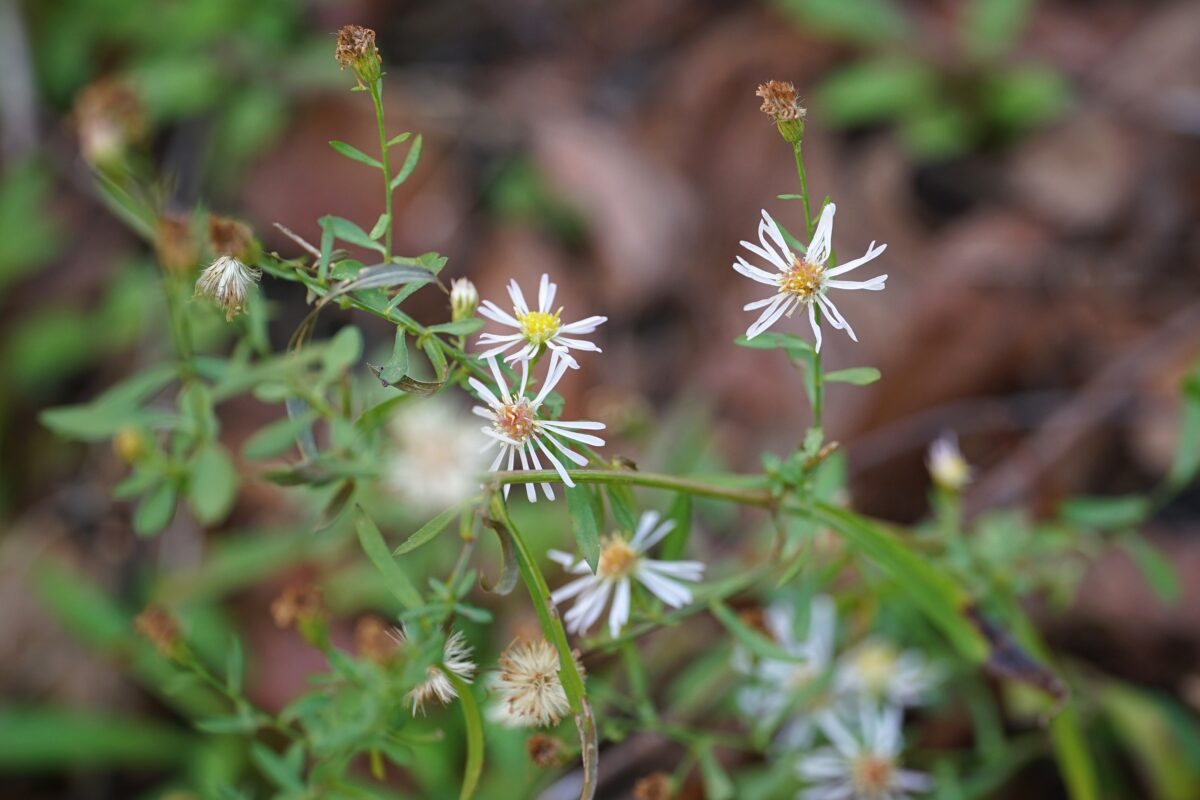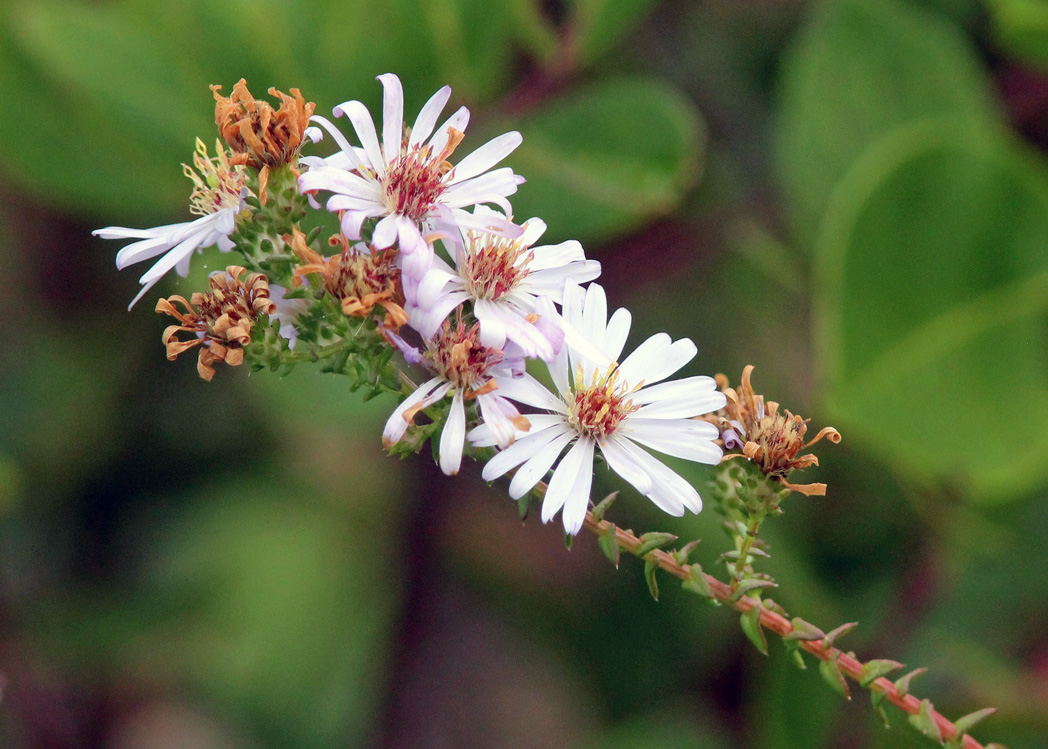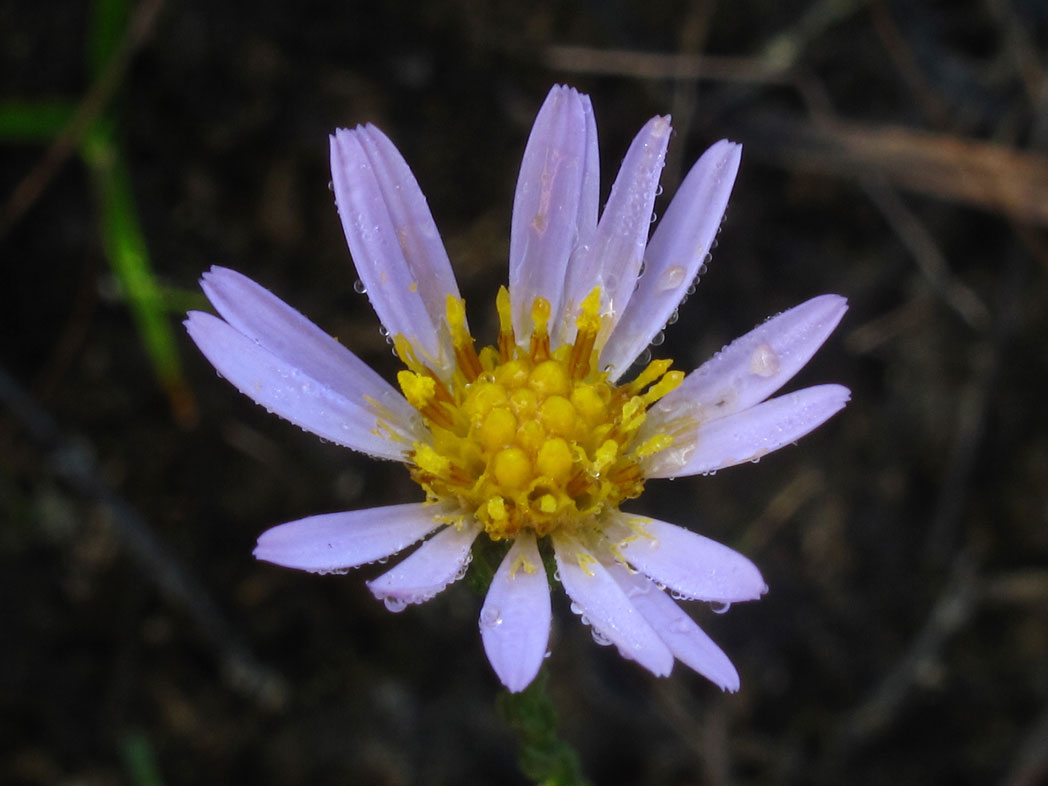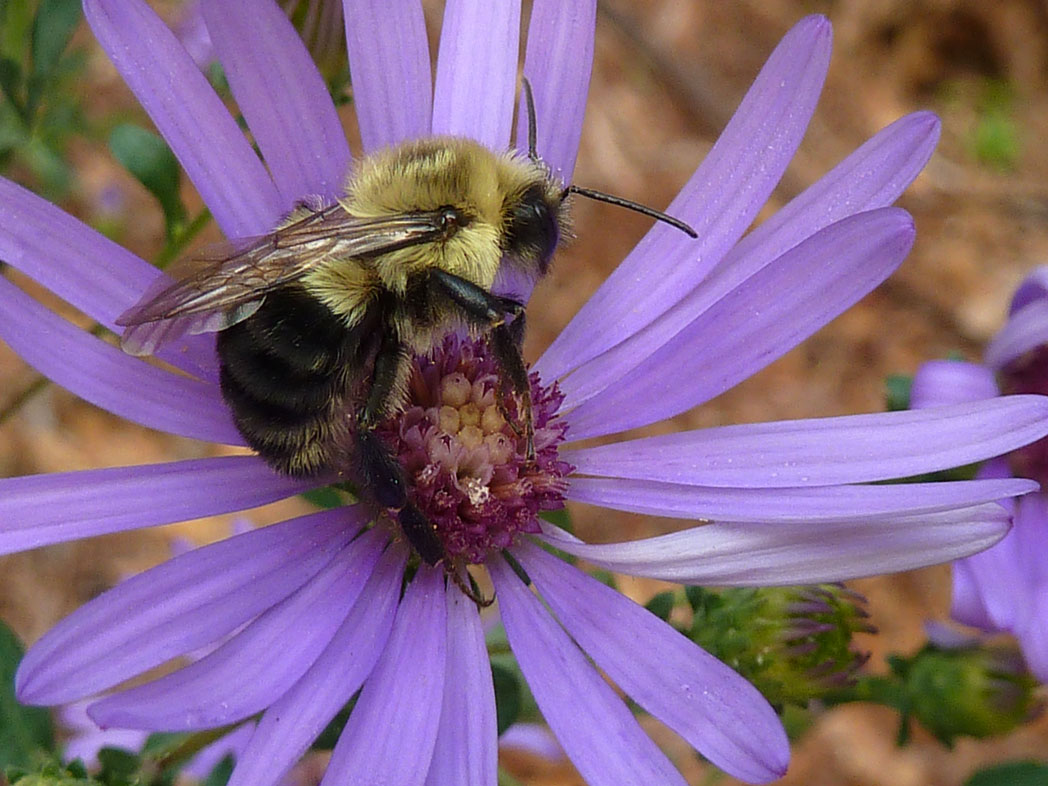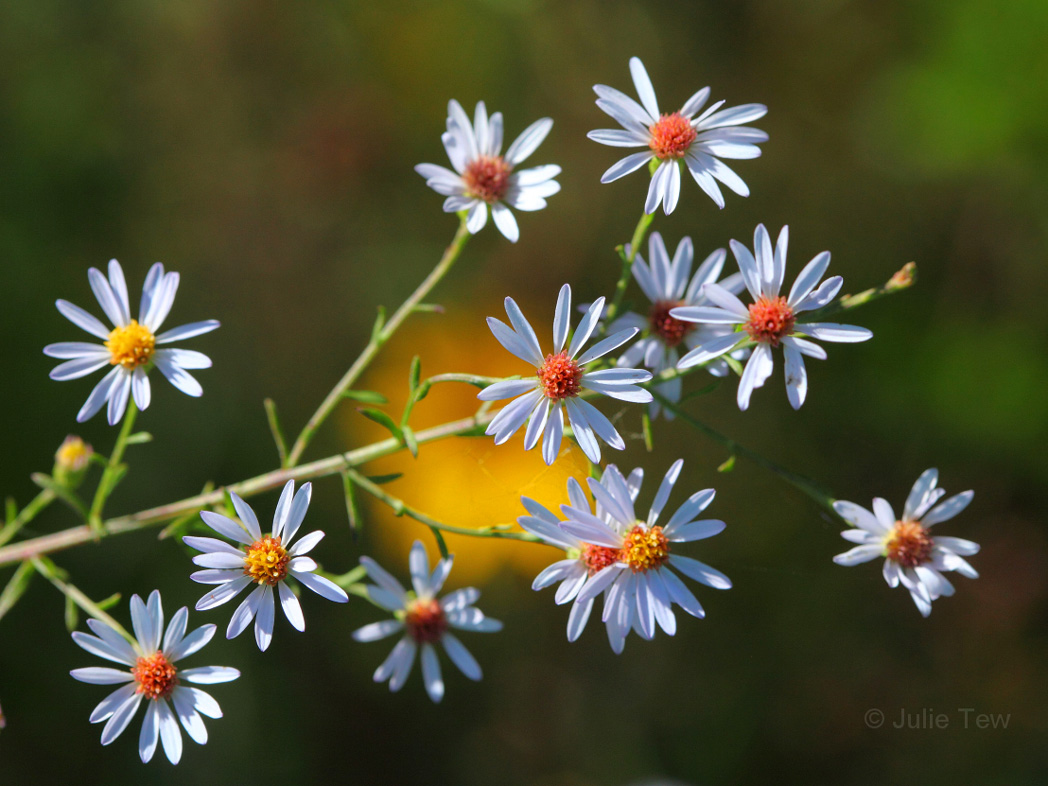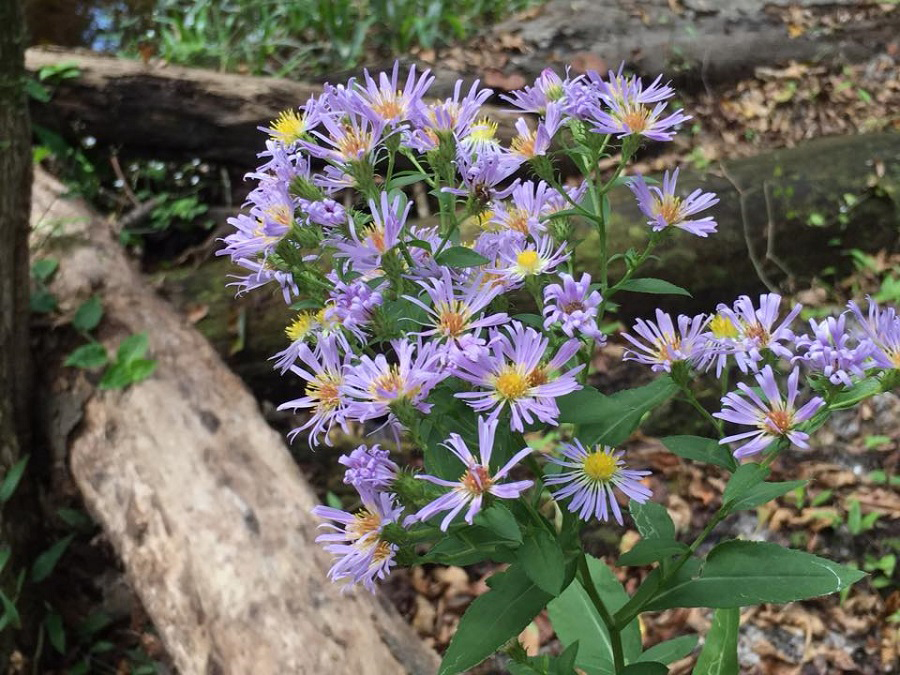Perennial saltmarsh aster
Pictured above: Perennial saltmarsh aster (Symphyotrichum tenuifolium) by Emily Bell. Click on terms for botanical definitions. View post as a PDF.
Perennial saltmarsh aster (Symphyotrichum tenuifolium) has been described online as a “weak straggly plant,” however, as one of the few and often the only large-flowered species present among the grasses and rushes of the salt marsh, it plays an important ecological role for native bees! It forms dense clumps or mats, making it quite conspicuous even though its flowers are small and sparse. It blooms from summer to early winter.
The species epithet tenuifolium is derived from the Latin tenu, meaning “slender,” and foli, meaning “leaves.” This refers to the narrowly lanceolate leaves which are simple and alternately arranged. Although soft, they almost appear to come to a sharp point at the tips. Leaf margins are entire. Stems are flexuous and typically glabrous. Its yellow disc florets are surrounded by many white to pale purple ray florets.
Members of the Symphyotrichum genus were once classified in the genus Aster, which contained over 600 species. All have since been reclassified into 10 different genera. The genus name Symphyotrichum is from the Greek sýmphysis, meaning “growing together,” and thríx, or “hair.” It refers to a basal ring of hairs or bristles (pappi) thought to occur on New England aster (Aster novi-belgii, now Symphyotrichum novi-belgii); however, this characteristic is absent in most modern Symphyotrichum species.
Family: Asteraceae (Aster, composite or daisy family)
Native range: Coastal counties throughout Florida
To see where natural populations of Perennial saltmarsh aster have been vouchered, visit florida.plantatlas.usf.edu.
Lifespan: Perennial
Soil: Saline soils, predominantly sandy and/or peaty
Exposure: Full sun
Growth habit: Herbaceous with spreading stems, reaching up to 4 feet
Perennial saltmarsh aster plants are not commercially available. Visit a natural area to see them.
Learn more about Perennial saltmarsh aster from the Institute for Regional Conservation.
For information on other Symphyotrichum species, see these resources:

